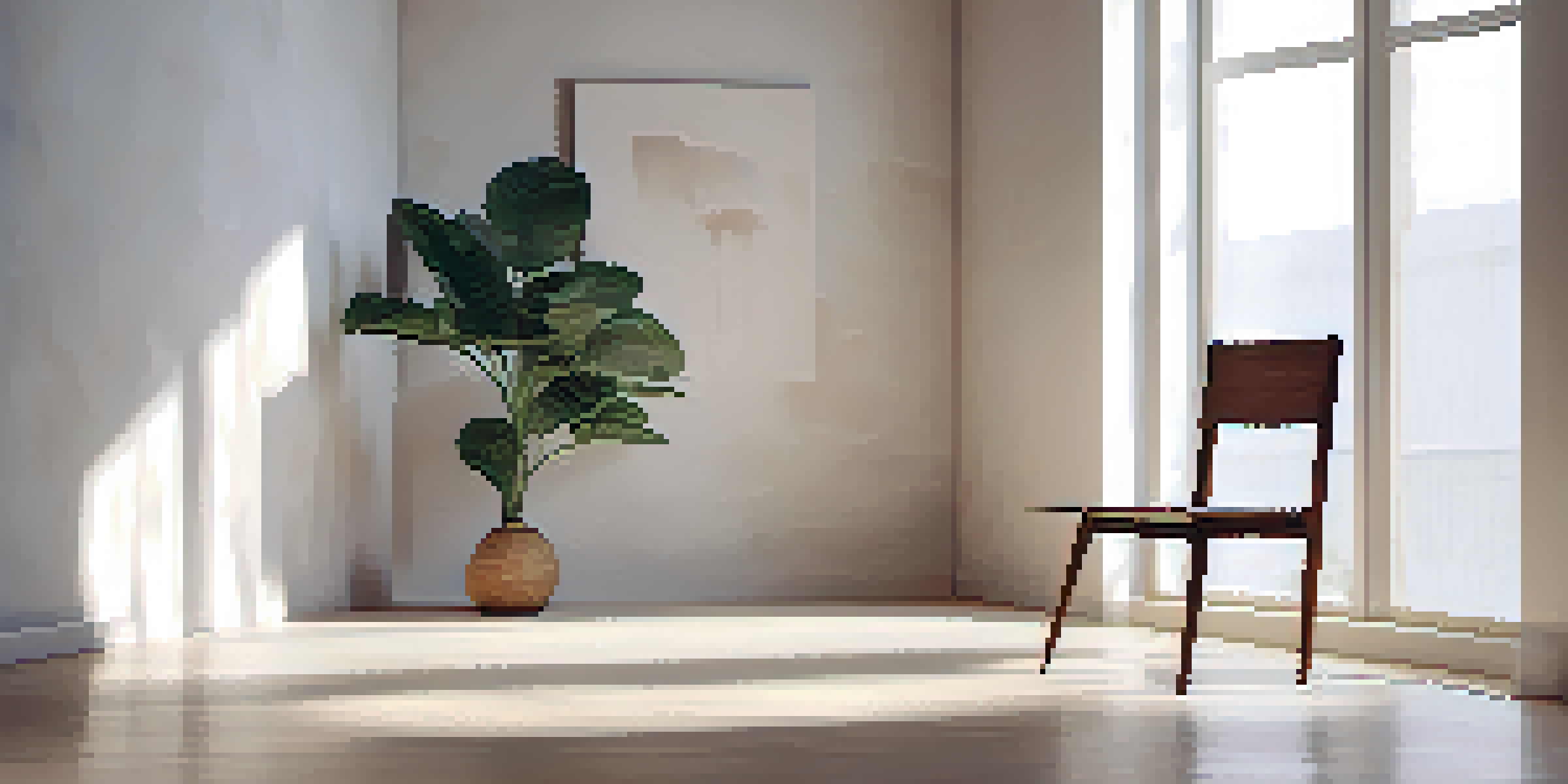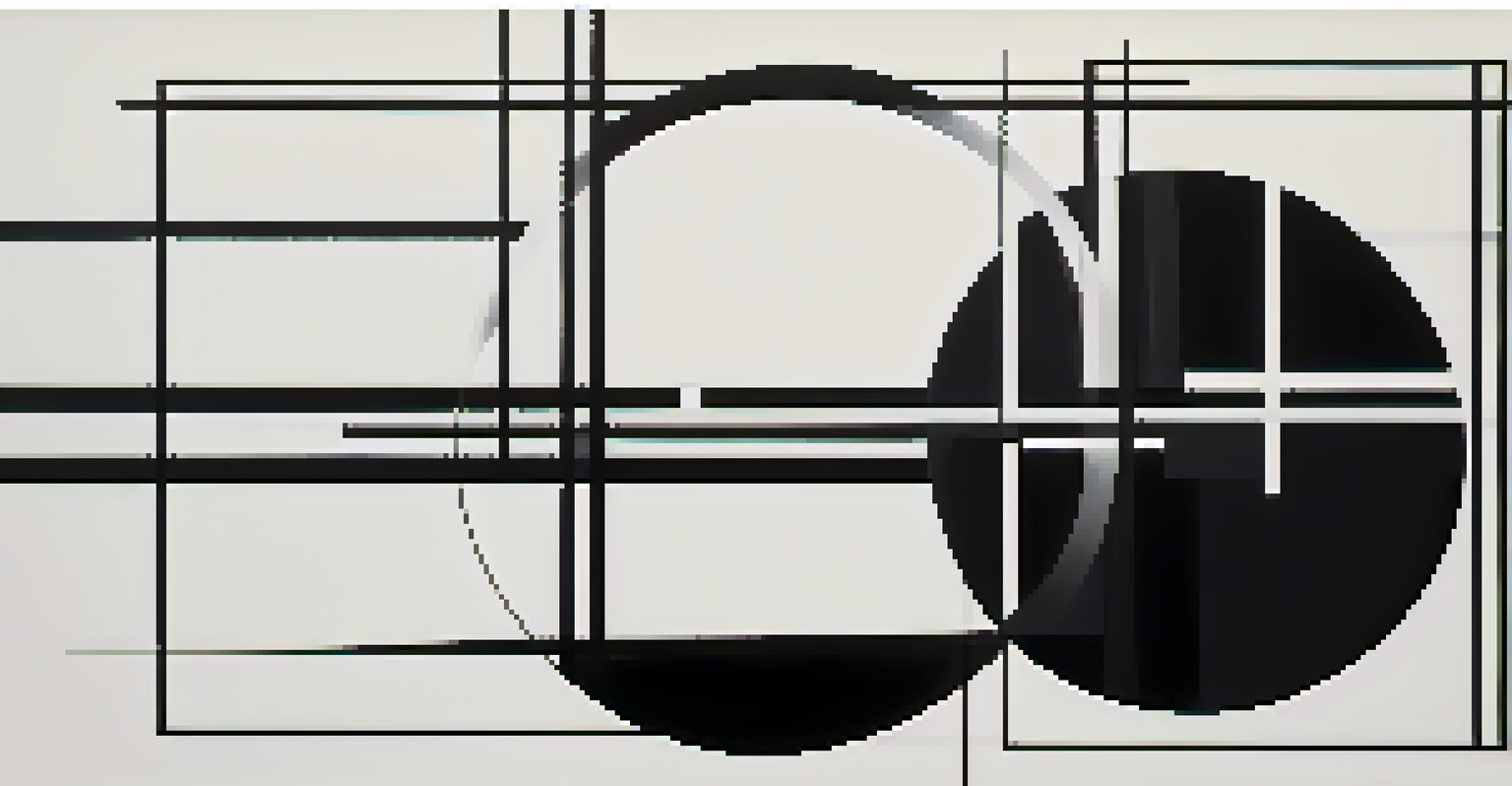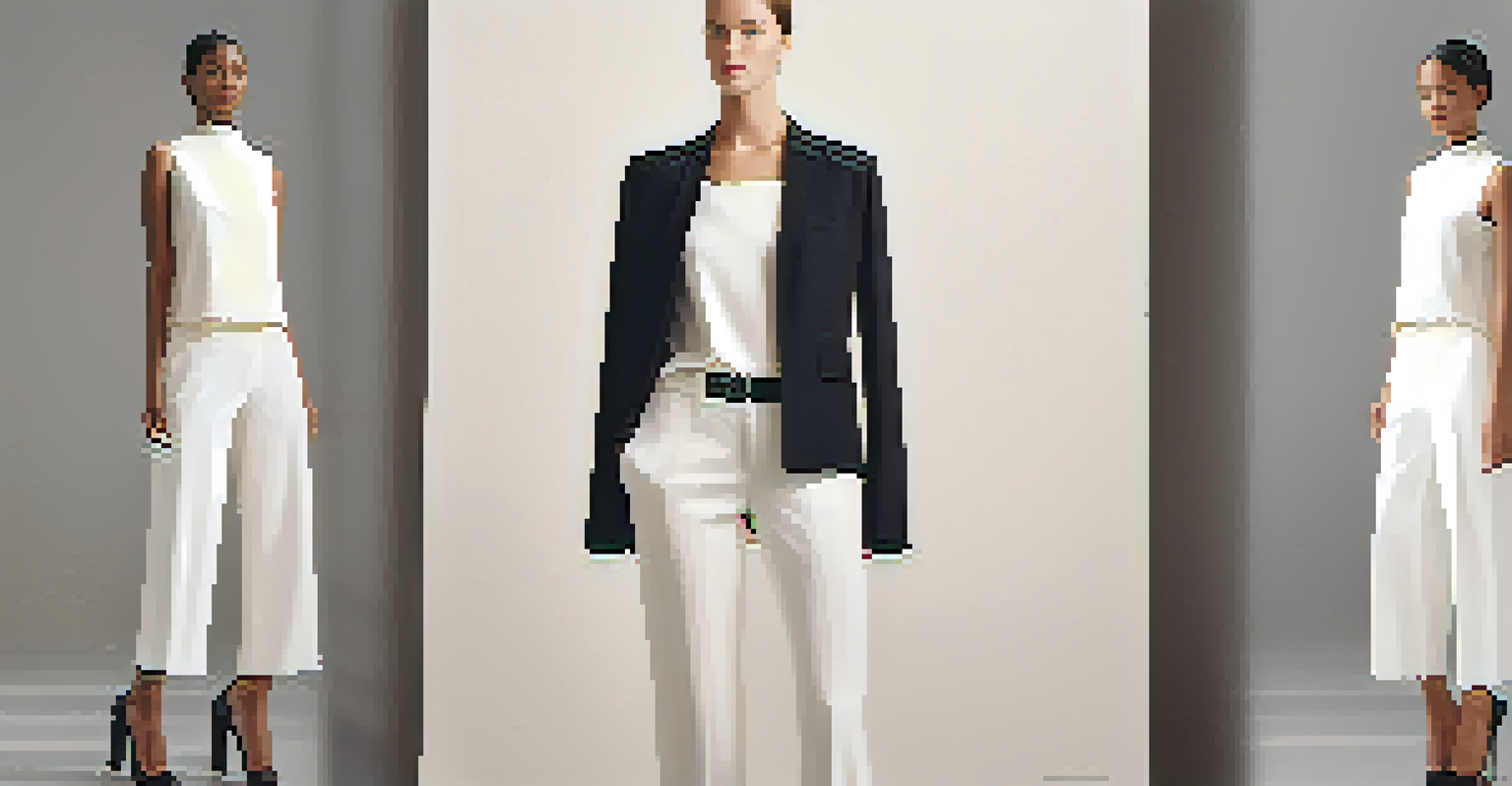Exploring Minimalism in Art and Fashion Design

Understanding the Essence of Minimalism
Minimalism is more than just a design choice; it's a lifestyle that emphasizes simplicity and functionality. In art, it strips away the unnecessary to focus on the core message, using basic shapes and colors. Similarly, in fashion, minimalism promotes clean lines and understated elegance, allowing the wearer’s personality to shine.
Less is more.
This movement emerged in the mid-20th century as a reaction against the complexities and excesses of previous styles. Artists like Donald Judd and Agnes Martin pioneered this aesthetic, emphasizing that 'less is more.' Today, this philosophy continues to influence both artists and designers, inviting us to reflect on what truly matters.
By focusing on simplicity, minimalism encourages us to slow down and appreciate our surroundings. It challenges us to declutter not just our living spaces but also our minds. As we explore minimalism in art and fashion, we begin to understand its profound impact on our daily lives.
The Origins of Minimalism in Art
The roots of minimalism in art trace back to the late 1950s and early 1960s, with artists striving to create works that eliminated personal expression. Instead of focusing on the artist's emotions, these creators aimed for a more objective experience. This shift led to the development of geometric forms and monochromatic palettes that defined the minimalist aesthetic.

Pioneers like Frank Stella and Dan Flavin used industrial materials to create art that was both accessible and thought-provoking. Their works challenged traditional notions of art, encouraging viewers to engage with the piece in a more contemplative manner. The minimalist art movement sparked discussions about the role of art in society and its relationship to the viewer.
Minimalism as a Lifestyle Choice
Minimalism transcends design, encouraging a lifestyle focused on simplicity and intentionality.
As minimalism gained traction, it inspired subsequent generations of artists to explore the boundaries of form and function. This exploration continues today, influencing contemporary artworks that still resonate with the principles of simplicity and clarity. The minimalist ethos remains relevant, encouraging both artists and audiences to embrace simplicity.
Key Features of Minimalist Art
Minimalist art is characterized by its use of simple forms and limited color palettes. Artists often employ repetition and symmetry to create a sense of harmony and balance. This deliberate reduction of elements invites viewers to examine the relationship between the artwork and its environment.
Simplicity is the ultimate sophistication.
The use of everyday materials, such as metal and acrylic, is another hallmark of this style. By utilizing these common items, minimalist artists challenge the notion of what constitutes art. This accessibility allows a broader audience to appreciate and engage with their work.
Additionally, minimalist art often encourages introspection. The simplicity of the forms can evoke a range of emotions and thoughts, prompting viewers to reflect on their own experiences. This profound connection between the art and the audience is a key aspect of what makes minimalist art so enduring.
The Rise of Minimalism in Fashion
Just like in art, minimalism in fashion emerged as a response to the excesses of previous decades. Designers began to favor clean silhouettes and neutral color palettes, moving away from flamboyant patterns and intricate details. This shift created a new standard for elegance that prioritized quality over quantity.
Brands like Calvin Klein and Jil Sander championed minimalist fashion in the 1990s, emphasizing timeless pieces that could be worn across seasons. Their designs often featured structured cuts and luxurious fabrics, proving that simplicity could exude sophistication. This approach not only redefined modern fashion but also influenced consumer behavior toward more sustainable choices.
Art and Fashion's Shared Principles
The minimalist movement in art and fashion emphasizes clean lines and functionality, illustrating a deep connection between the two fields.
Today, minimalist fashion continues to thrive, with many individuals embracing capsule wardrobes. This concept focuses on versatile pieces that can be mixed and matched, reducing decision fatigue and promoting a more intentional approach to dressing. By adopting minimalism in fashion, we can cultivate a sense of clarity and purpose in our daily lives.
The Intersection of Art and Fashion Minimalism
The worlds of art and fashion are deeply intertwined, with minimalist principles influencing both fields. Many fashion designers draw inspiration from minimalist artworks, incorporating similar shapes and colors into their collections. This cross-pollination highlights the shared philosophy of simplicity and functionality.
Exhibitions that blend art and fashion often showcase how minimalist design can transcend boundaries. For instance, installations featuring clothing as art pieces invite viewers to see fashion not just as wearables but as a form of expression. This unique approach fosters a deeper appreciation for both art and fashion.
Moreover, minimalist fashion allows for personal expression without overwhelming the senses. By choosing pieces that reflect minimalism's core values, individuals can create a signature style that feels authentic. This harmonious relationship between art and fashion encourages us to explore our creativity while embracing simplicity.
The Benefits of Embracing Minimalism
Adopting minimalism in art and fashion can lead to numerous benefits, both mentally and aesthetically. By surrounding ourselves with fewer distractions, we can enhance our focus and clarity. This intentional approach fosters a sense of tranquility, allowing us to appreciate the beauty of simplicity in everyday life.
In fashion, minimalism promotes sustainability by encouraging conscious consumption. By investing in high-quality, versatile pieces, we can reduce waste and support ethical brands. This shift not only benefits the environment but also highlights the importance of quality over quantity in our wardrobes.
Benefits of Minimalism
Embracing minimalism promotes mental clarity, sustainability, and creativity, enhancing our relationship with art and fashion.
Additionally, minimalism encourages creativity. With fewer choices, we can experiment with different styles and combinations, allowing our unique personalities to shine through. By embracing minimalism, we can cultivate a more meaningful relationship with art and fashion, leading to a more fulfilling lifestyle.
The Future of Minimalism in Art and Fashion
As we move into an increasingly complex world, the principles of minimalism remain relevant and vital. The ongoing dialogue surrounding sustainability and ethical practices in both art and fashion highlights the importance of mindful consumption. This evolution encourages artists and designers to create pieces that resonate with contemporary values.
Technological advancements also play a role in shaping the future of minimalism. Digital art and fashion innovations provide new avenues for expression while still adhering to minimalist principles. This intersection of technology and design invites fresh perspectives on how we can engage with art and fashion in our daily lives.

Ultimately, the future of minimalism lies in its adaptability. As society continues to evolve, the core values of simplicity and clarity will guide artists and designers in their creative endeavors. By embracing minimalism, we can foster a more intentional and meaningful connection with the world around us.